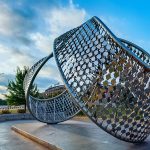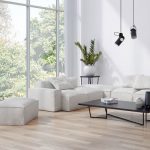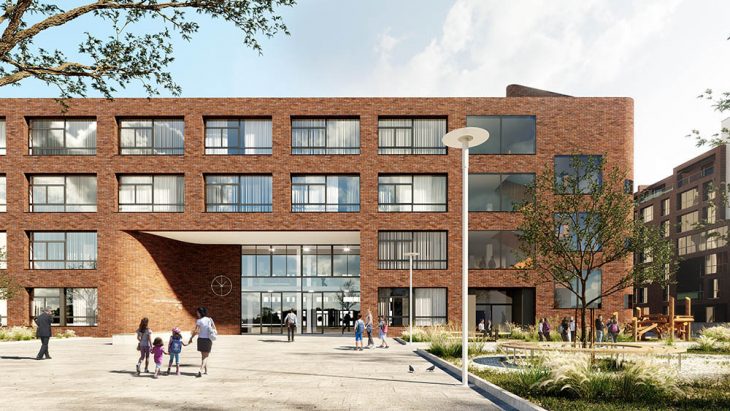
The latest project by Brusnika Design is a secondary comprehensive school in Novosibirsk’s European Riverfront zone, which is part of a large-scale rehabilitation project. At the time of the master plan’s preparation, the school was integrated into the district’s structure. The project team offered a novel compact form with minimal outer facades and a non-conventional layout, with no subject-oriented classrooms or strict space allocation, instead of the classic H or U-shaped school design used in Soviet urban development. The project was created in partnership with a number of different teams (SVESMI, KCAP, Novascape etc.). Discover more after the jump.
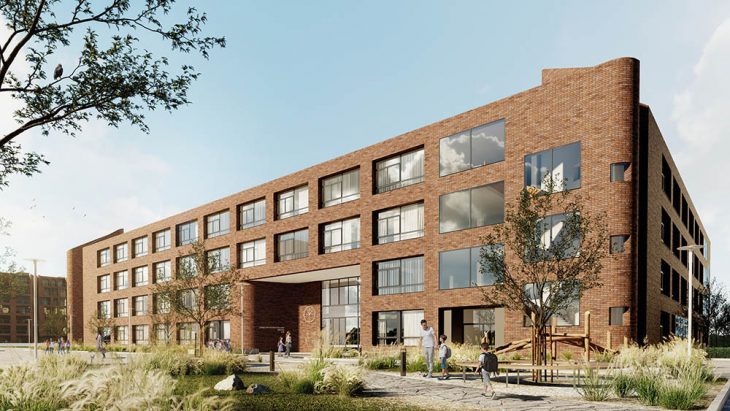
From the architects: A secondary comprehensive school is located in the European Riverfront district of Novosibirsk, part of a large-scale redevelopment project realised by Brusnika company. Currently 30 houses have been constructed with over 7000 residents living there.
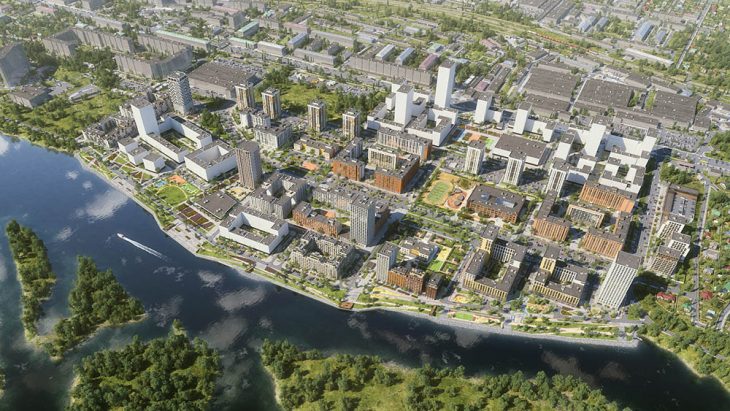
Being an essential social object, the school was integrated into the district’s structure at the stage of its master plan development. The building is located in the heart of the district so that its central entrance is at the crossroads of two major streets of the residential area. The school is well visible from a variety of vantage points and due to its large-scale plot features an important public space.
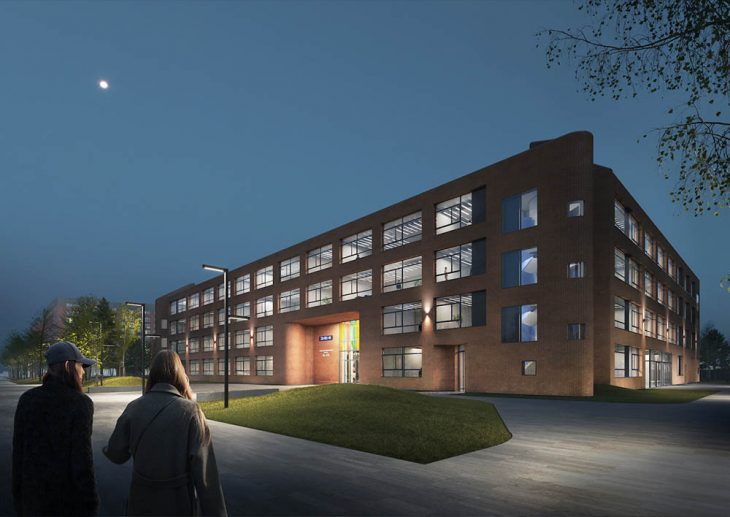
The project team opted against an H or U-shaped school design, traditional for Soviet urban development and suggested a new compact form with minimal outer facades and a non-conventional layout, where there are no subject-oriented classrooms or strict space allocation. According to the project, the school has to be highly adaptable, anticipating both the immediate change and that likely to arise in a decade. While designing the building geometry, the architects optimised its area per student (compared to typical Russian school projects), thus allocating more resources into each square metre.
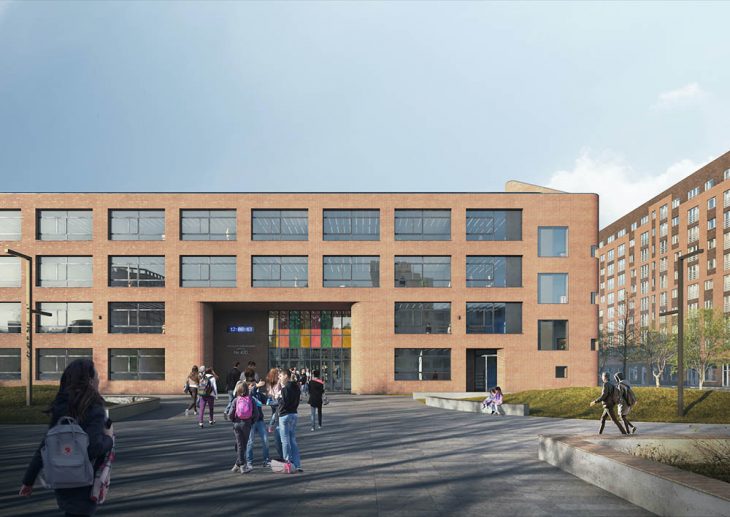
The building has four well-balanced facades overlooking four different streets. Each of them has its special features in terms of entrance setting and rhythmic window patterns. A balanced grid forming the basis of the facade maximises the window size in classrooms thus providing an increased solar gain for the interiors. In the dark stained glass windows expose bright interiors to the street transforming the school into a light source.
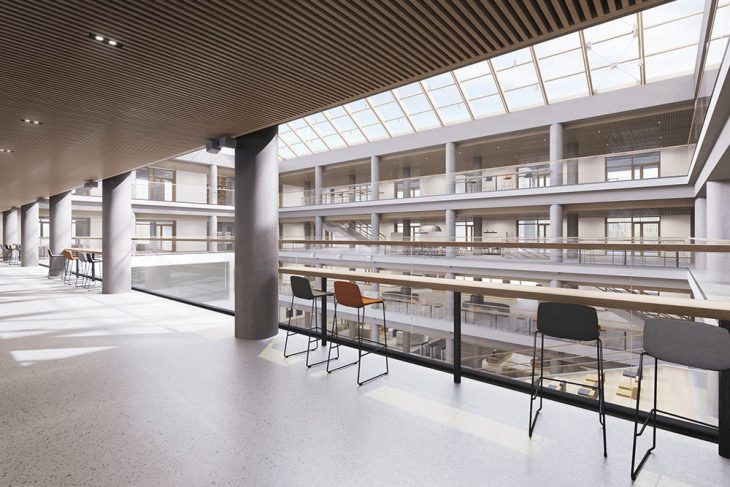
Corner focal points shaped by staircases play a crucial part in the building composition. Strong vertical lines create a unique design, untypical of schools, with large window panes revealing children’s random movement. The main school entrance is a gate styled as an entry niche with piers on both sides welcoming visitors in. A signature digital clock creates a convenient meeting place and in the evening the entrance turns into a light source, resembling a stained glass lantern.
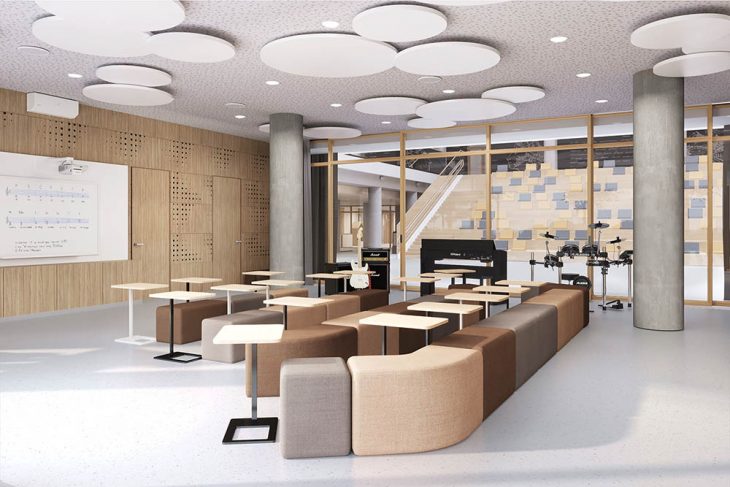
The interior design is based on the idea of utmost openness and simplicity – the classrooms are linked with transparent partitions. Along with concrete pillars, the ceiling and polymer self-levelling
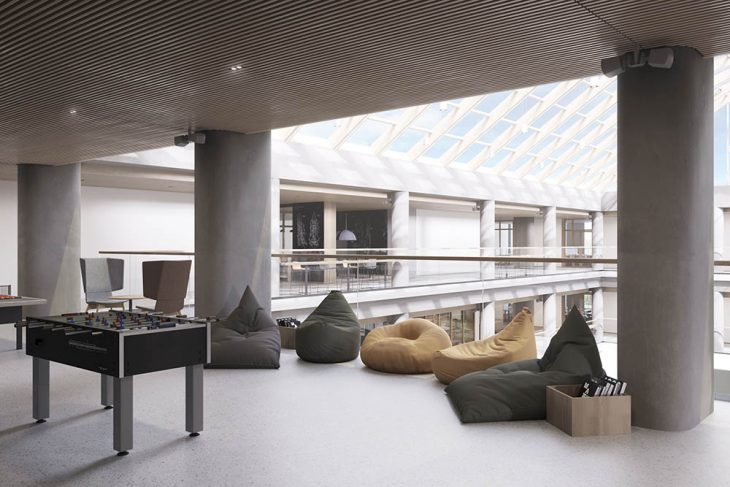
floors merely acting as a background, the entire school becomes one multifunctional space.
There are no dedicated classrooms – they have been replaced with four clusters: media and art, sport, science and technology. The space within the clusters is universal and can be used for studying several subjects. The size and shape of the rooms promote versatile teaching techniques and different seating arrangements depending on the lesson objectives. To achieve this, the project team chose light mobile furniture, easy to arrange for traditional lessons, small and large group classes, and informal events. Glass partitions between the rooms and the corridor increase solar gain and create more transparency in the learning environment.
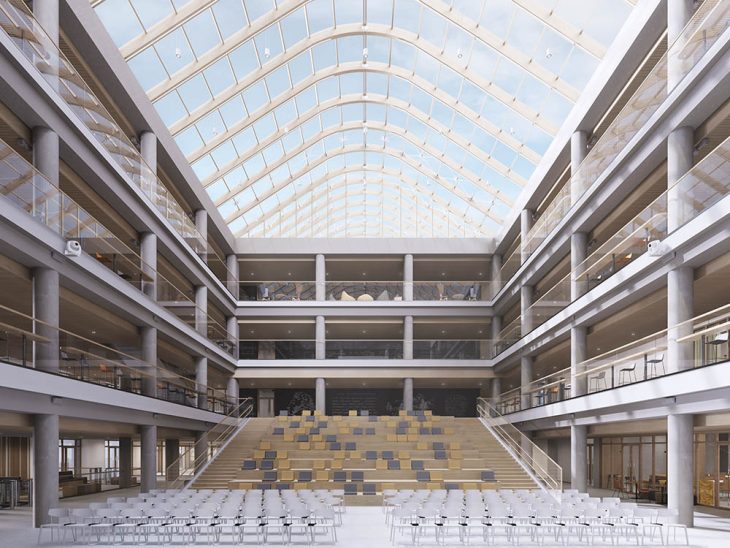
Public spaces are at the centre of the building, featuring a universal atrium and a glass dome gym. Both central areas capture the maximum of sunlight and create additional light sources for corridors.
RELATED: FIND MORE IMPRESSIVE PROJECTS FROM RUSSIA
The atrium was conceived in lieu of a conventional assembly hall. Equipped with a wooden rostrum and staircase in one, it is designed as a flexible, multi-purpose space to accommodate both large-scale and small-scale events: lectures, concerts, drama performances and breaks between the classes. A recreational zone with poufs, settees and plants is located nearby. Its transparent and mobile partitions link the atrium to the canteen and music classroom both visually and physically. Another adjoining room is the dance studio. If required, they can all be transformed into a single area.
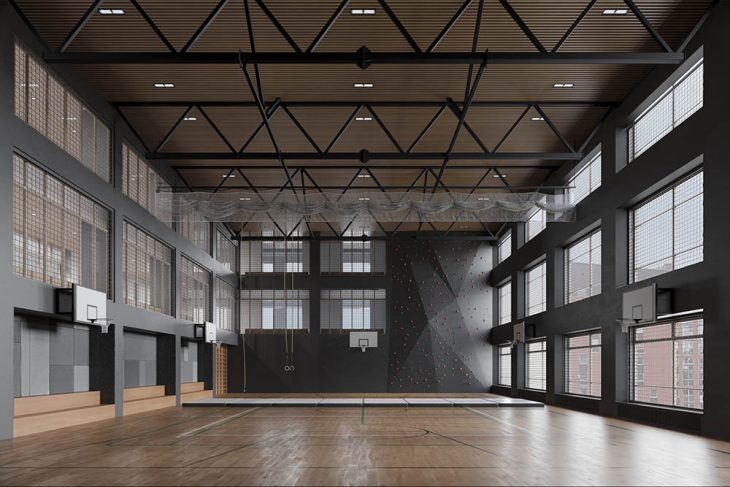
The school is equipped with two gyms of different sizes. The big gym is designed to maximise solar gain. Due to glass partitions, games and training sessions are available to everyone. The use of wood in the lower part of the gym makes it human-scaled providing storage space for sports gear. Concept-wise, the small gym is a replica of the big one. Stained glass on second and third floor levels link it to the atrium and a transparent dome fills it with sunlight.
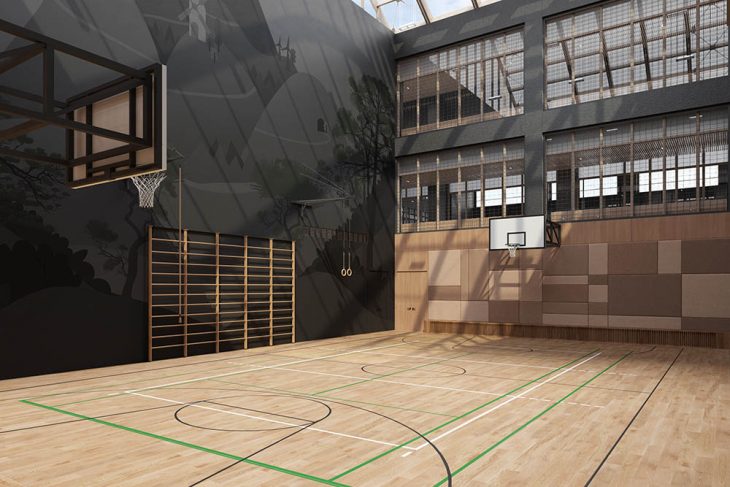
The staff room is conceived as an administrative open plan office comprising six zones: an open space zone for teachers’ work and recreation, a clerk’s office, a reception, negotiations rooms, a kitchenette and the head teacher’s office. Glass partitions join the room to the atrium, which creates additional transparency to educators’ work.
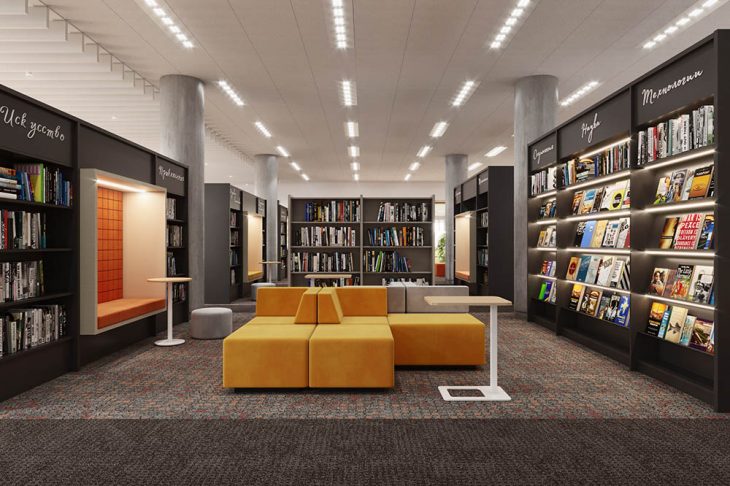
The media cluster is another attractive space. It is a state-of-the-art school library with much more to offer apart from book storage. The hall is split into areas with an information library centre, a laboratory, a press centre, co-working space and a book depository.
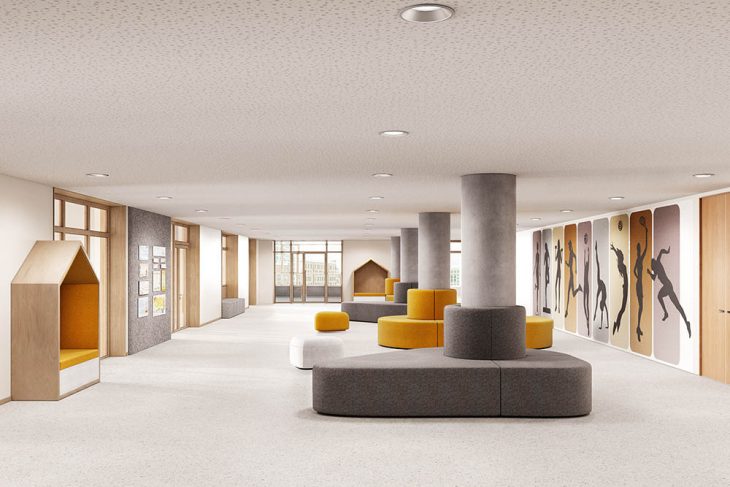
The educational process is not limited to classrooms ? it expands to the school premises. The project concept aims to combine sport and play functions with terrain relief. There is a sports ground for ball games, which can be transformed into an amphitheatre and an outdoor laboratory for senior students. It neighbours with recreational grounds designed as green slopes with wooden decking where students can sit. There are modular pavilions, a workout zone and an active playground for children of different ages with slides, balance beams, trampolines and climbing frames.
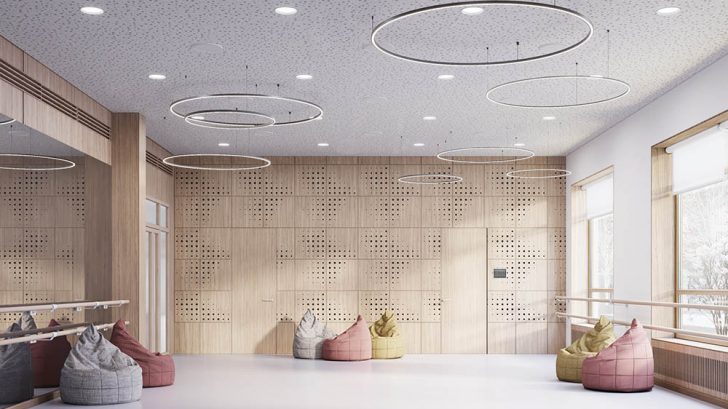
Location
22, Vladimir Zarovny st, Novosibirsk, Russia
Project team
Developer ? Brusnika
Master plan ? KCAP Architects & Planners
Architecture ? SVESMI, Brusnika. Design
Consulting ? Intelligent School, Centre for Educational Systems Development
Master design ? Geninzhproyekt
Landscape design ? Novascape
Construction and completion ? Brusnika
The object is realised within the frameworks of the Russian National Project Accommodation and Urban Environment
Volumetric data
Plot area ? 1,9 ha
Number of places at school ? 825
Total area ? 15800 m2
Number of classes ? 58
Estimated area per student ? 18 m2
Project cost ? 753070 roubles
Design
2019
Completion
2020?2021
Current status
Stage of completion
Find more projects by Brusnika: moskva.brusnika.ru


